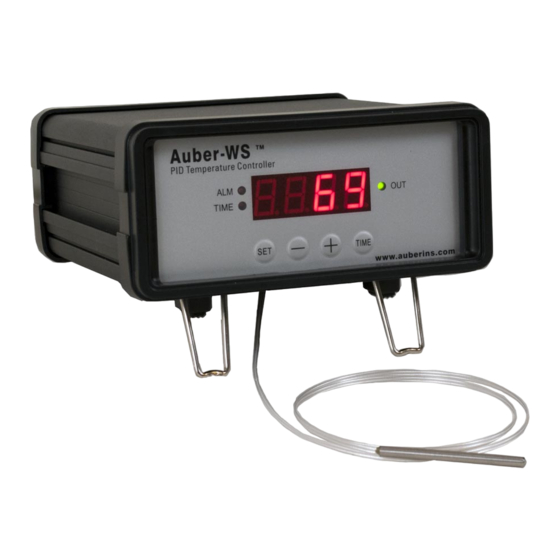Auber Instruments WS Series Betriebs- und Gebrauchsanleitung - Seite 17
Blättern Sie online oder laden Sie pdf Betriebs- und Gebrauchsanleitung für Controller Auber Instruments WS Series herunter. Auber Instruments WS Series 18 Seiten. Programmable pid temperature controller with dual probe
Auch für Auber Instruments WS Series: Kurzanleitung (15 seiten), Kurzanleitung (14 seiten), Betriebs- und Gebrauchsanleitung (18 seiten), Kurzanleitung (14 seiten)

Appendix 1
Managing the heat generated by the controller
The heat dissipation of the controller is directly related to the electric current drawing
power of the heater. If your cooker consumes less than 10 ampere of current or your pot
is less than 5 gal (19 liters), you do not need to worry about the heat generated by the
controller.
Sometimes, the AC current requirement might not be marked on the cooking appliance.
To find out how much current it will draw, divide the power (in wattage) by the line voltage,
for example, an 1800 watts 120V heater will draw 15A. A 2000 watts 240V heater will
draw 8.3 Ampere.
Why the heat becomes an issue?
The solid state relay (SSR) used in the controller is a critical component for the precision
temperature control. With the SSR, the power can be switched at high speeds with no
noise and no life time limitation. Compared with electromechanical relays, however,
SSRs have one drawback. They generate heat when passing the current. SSR's are
made of semiconductors that have a limited conductance. When passing current, the
heat will be produced from the resistance. Each ampere of current will produce about 1.3
watts of heat. When 12 Amp is passing through the controller, 16 watt of heat is
produced in the controller. As more heat is produced, the temperature inside the
controller will rise. If it reaches to higher than 70 ° C, it can shorten the life or even
damage some other components in the controller. The temperature inside of the
controller depends on the amplitude of the current, how long the controller needs to run
at full power and the ambient temperature.
The heat is only an issue during the start of the heating when the heater is running at full
power. Once the temperature is close to the set point, the controller will probably need
less than 50% of the power to maintain the temperature. Since the heat is directly related
to the current passing the controller, the heat produced at steady state will be
insignificant and can be ignored.
When the heat becomes an issue?
This controller can run at 10A continuously without worry of the temperature of the
controller. At 12A, the temperature of the controller will increase with time. The bottom of
the controller where the heat sink is located can rise by 63 ° F (35 ° C) from ambient if
running at full power continuously for 90 minutes. For this reason we don't recommend
running the controller at full power for more than 90 minutes. For 120 VAC, 15 A for 90
17
